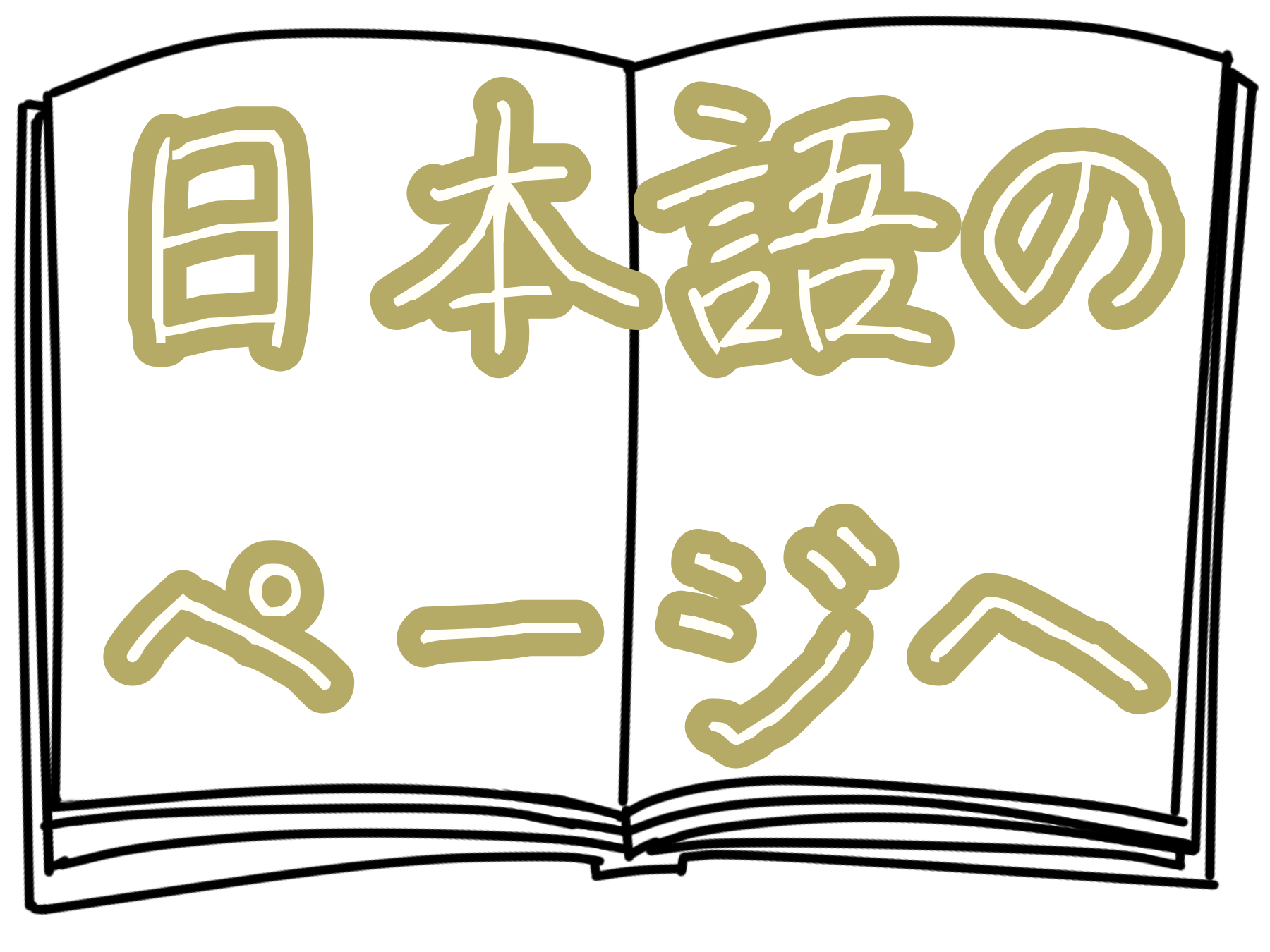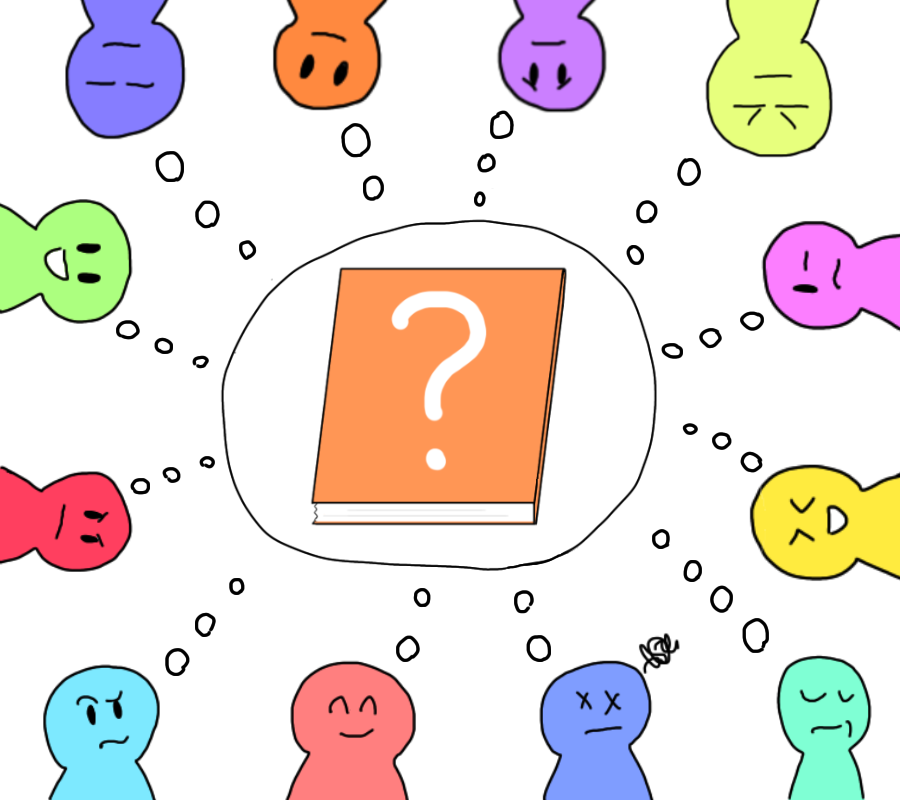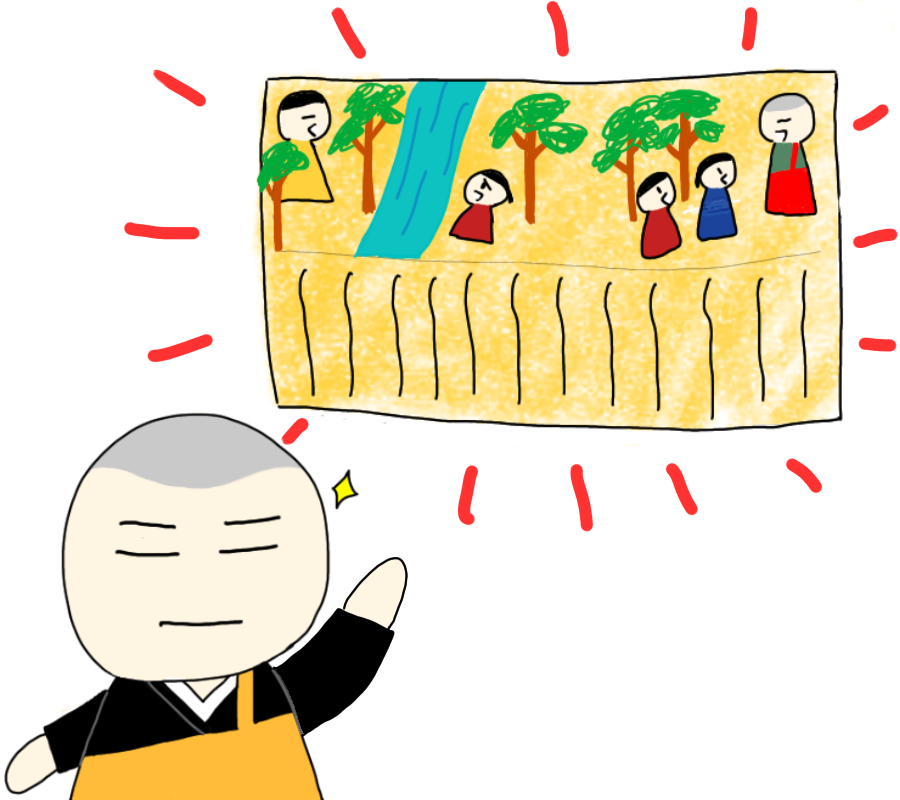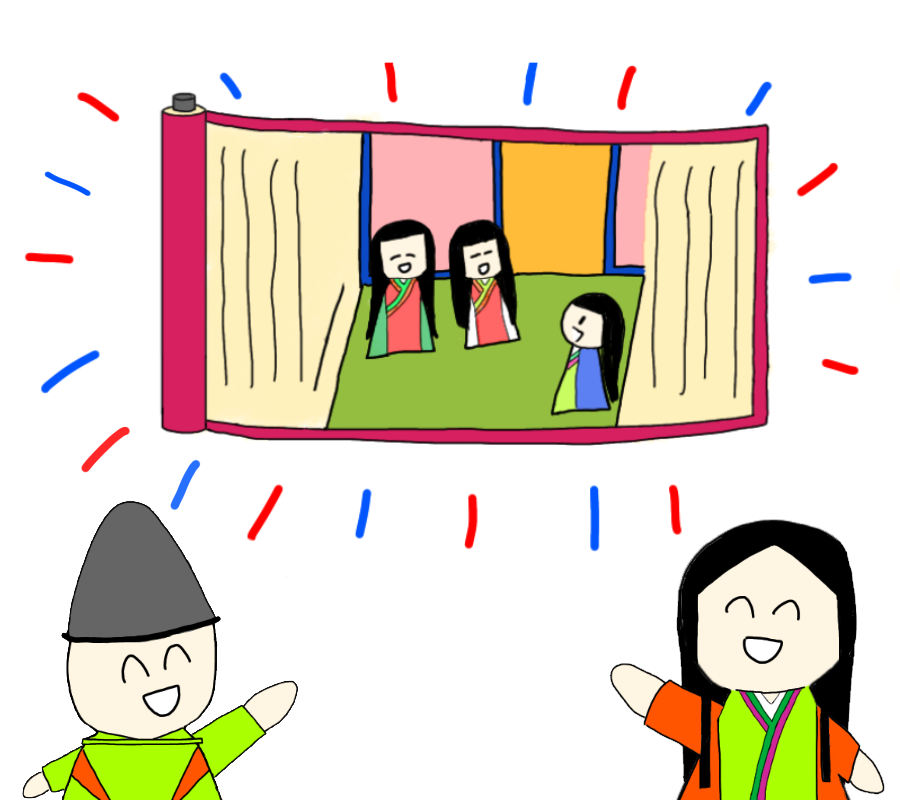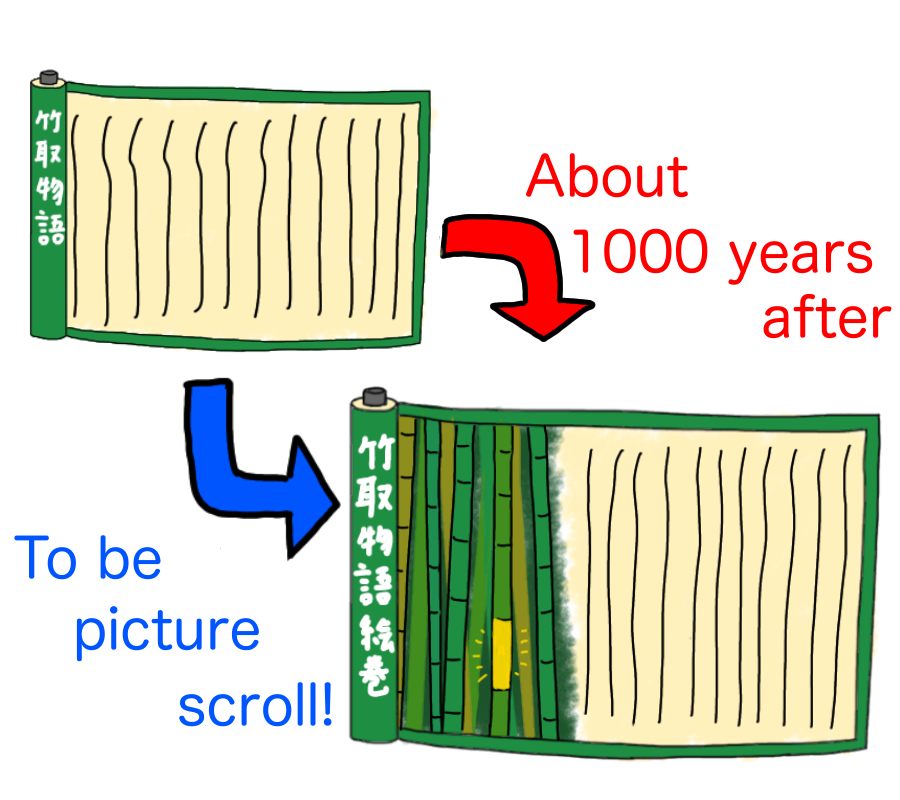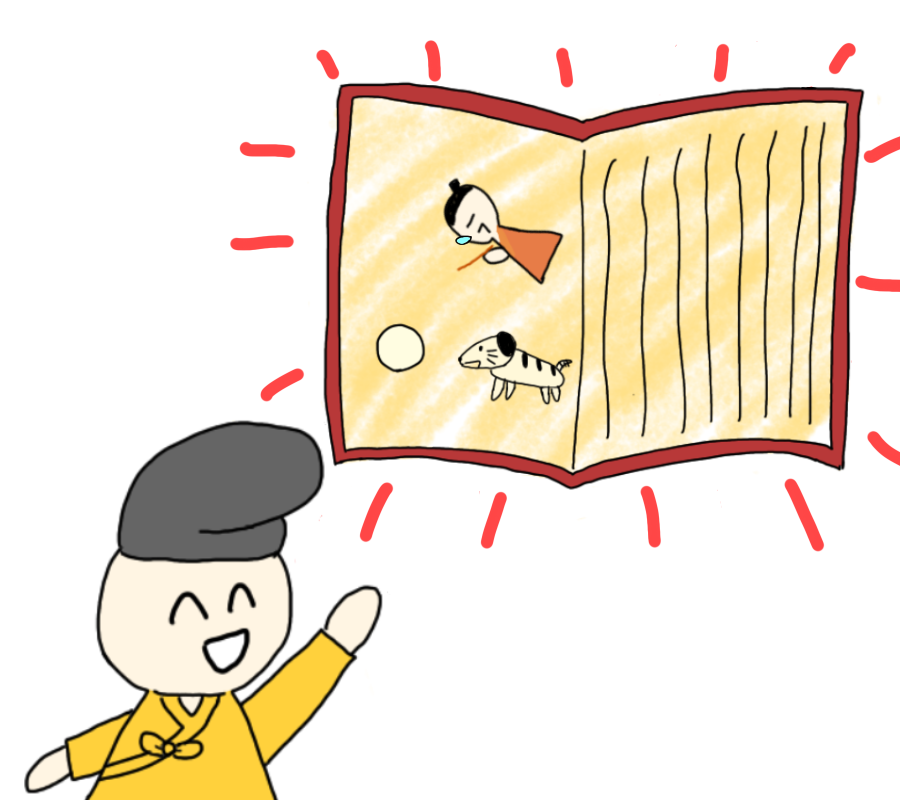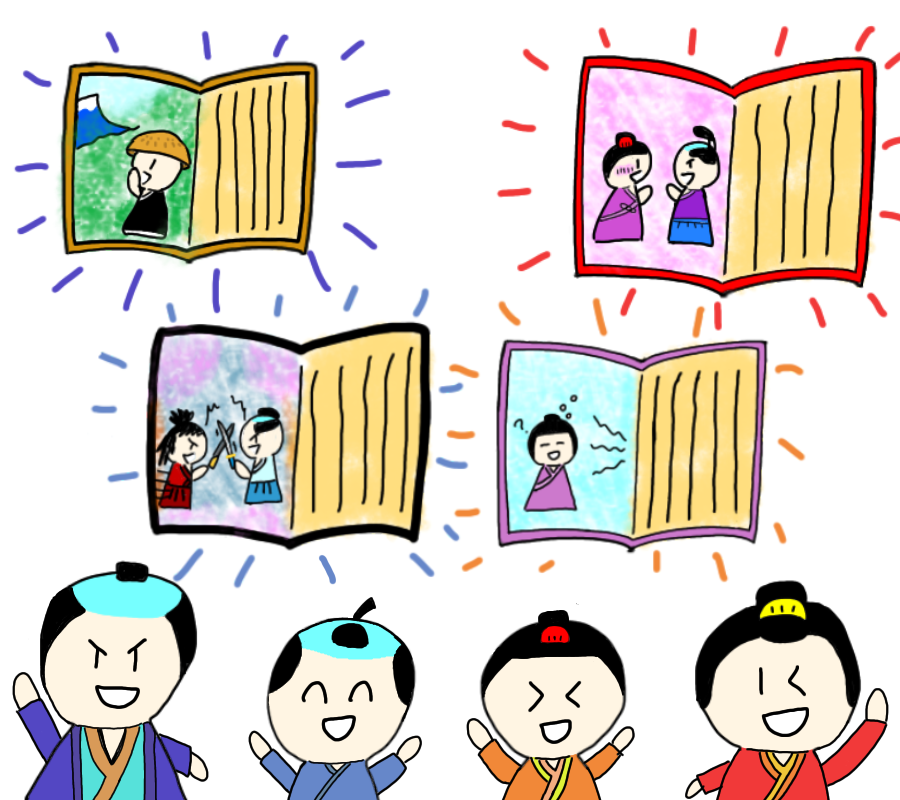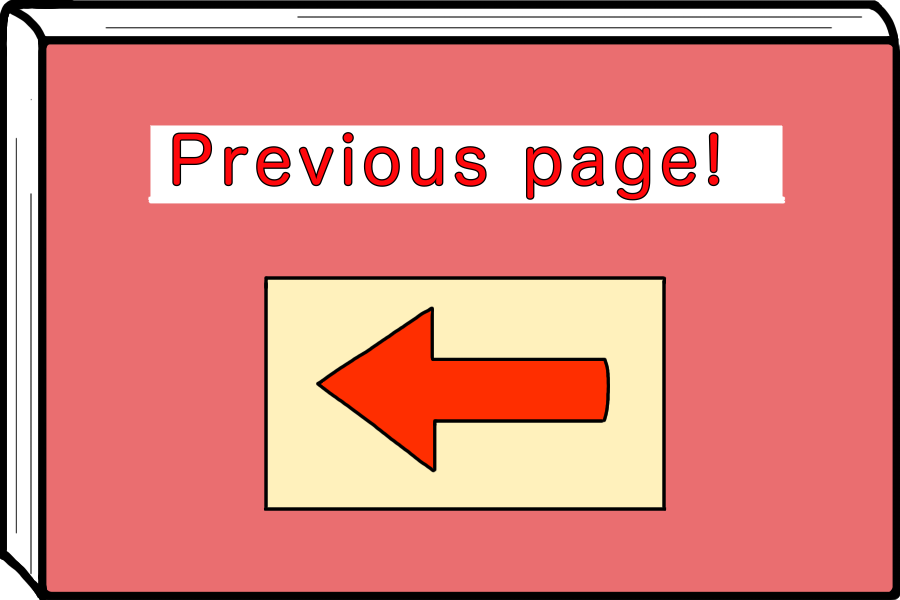
How did Ehon come into being?Many people might have read Ehon in their childhood, have never had a chance to think about how they came into being?
|
|
Its origin was in the sutra!The first Ehon is considered to be a sutra called |
|
The next one is a scroll!It was a picture scroll that developed after |
|
|
However, unexpectedly, |
|
Eventually, they took the form of books!In the end of the Muromachi period (1336 E.C.~1573 E.C.), Ehon takes the form of a book. |
|
Finally Ehon reaches everyone!In the Edo period, printing techniques developed and many people were able to read Ehon. |
|
|
The Ehon in the Edo period were called “Kusa zousi” and |
|

